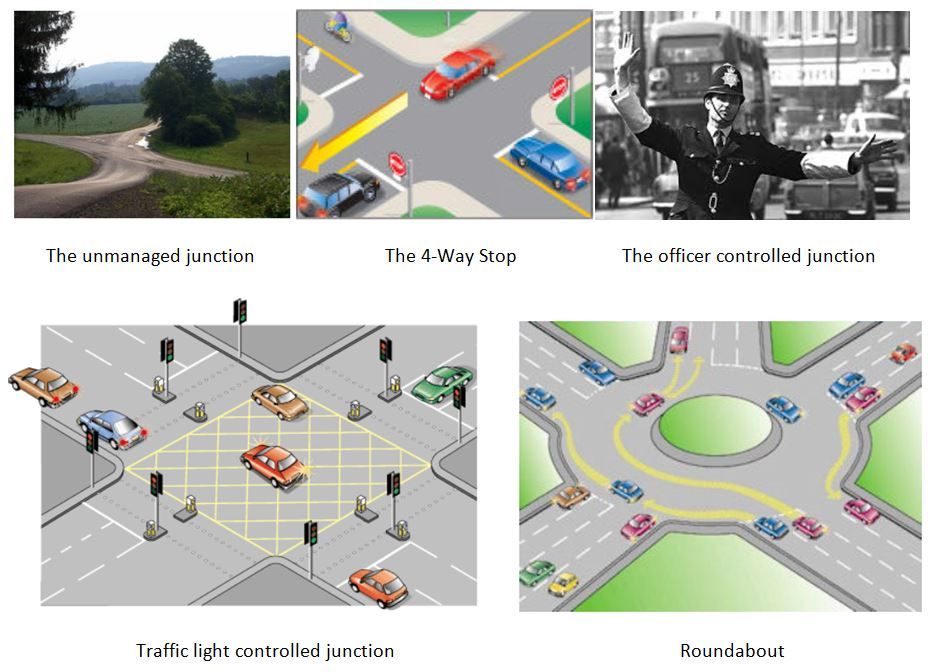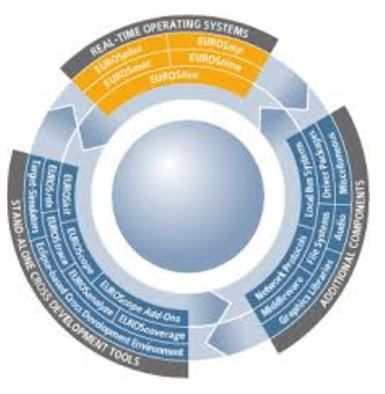Hack:
Managementless Organizations are like Roundabouts
Self-managing systems are common and occur all around us, although not commonly applied to the structure of businesses. Although such systems have advantages there are also inherent challenges to overcome.
The comparison between Traffic lights and Roundabouts is a great metaphor for self-managing organizations.
Self-managing organizations are not simply organizations with the managers removed, in the same way that roundabouts are not simply crossroads with the traffic lights removed; that’s a “4-way stop”.
Originally there was the unmarked cross road, then came the 4-way stop, then an officer stood on busy junctions, then came traffic lights on busy junctions, finally the roundabout was introduced.
The 4-way stop was better than the chaos of no organization, but quickly reached its limitations as traffic density increased, consequently an officer was introduced to control the “madding crowd”. The cost of the officer was prohibitive for most junctions so an automated system was introduced and adopted widely; namely the “traffic light”.
Finally, a new system replaced the traffic light; Roundabout junctions were laid out differently and the drivers were handed back the decision to stop or go, but this time in a carefully designed environment.
The roundabout allows more traffic flow, has shorter waiting times for the drivers, has fewer accidents and has lower operating costs.
Roundabouts provide an example of the advantages of a self-managing system.
Compared to a traditionally arranged business, the advantages of a self-managed system translate into: higher productivity, less capital employed, faster product delivery, fewer mistakes and lower fixed costs. This is why organizations are keen to introduce such systems.
With a “traffic light” type system the organization must tell each worker what to do and when (when to go and stop), each worker must respond predictably (go and stop when instructed).
Hence the terms command-and-control PLUS conform-and-comply.
With a “roundabout” type system the organization leaves it to the workers to choose what to do and when (when to go and stop). The workers base their decisions upon what others around them are doing; this requires more responsibility and clear visibility of the rest of the workers (situational awareness).
The workers need responsibility-and-autonomy.
Responsibility for their assets and decisions, as well as autonomy so that no one else is directing their decisions (otherwise they can’t really be held responsible).
The challenges of self-management.
There are new skills the workforce will need to learn and a new system will have to be introduced to both organize activities and allow individuals to have clear visibility of their colleagues’ activities (situational awareness). The system will need checks-and-measures to feedback how it’s all going.
And finally of course, the management team have to let go of the reins.
There are two parts of implementation;
a) The technical design and introduction of a rational “operating system”
b) The cultural shift that sees employees taking on new responsibilities and the management leaving them to it (the autonomy bit).
Why is this coming along just now?
Self-managing systems are not new.
Going back to the road junction metaphor, the important characteristic of the roundabout is that the road has to be redesigned to support the demands of self-organization, it has to be designed to provide each driver with situational awareness.
Applying this reflection to a self-managing business system; such a system must provide the facility for the employees to perceive the real-time decisions/behaviours of their colleagues (situational awareness), the system must also record both their decisions (for others to see) and their successful stewardship of the organizations resources.
Why is this today occurring today?
Today we can cheaply achieve this real-time situational awareness through IT; indeed most organizations already use IT to feed-back information to their management team.








You need to register in order to submit a comment.